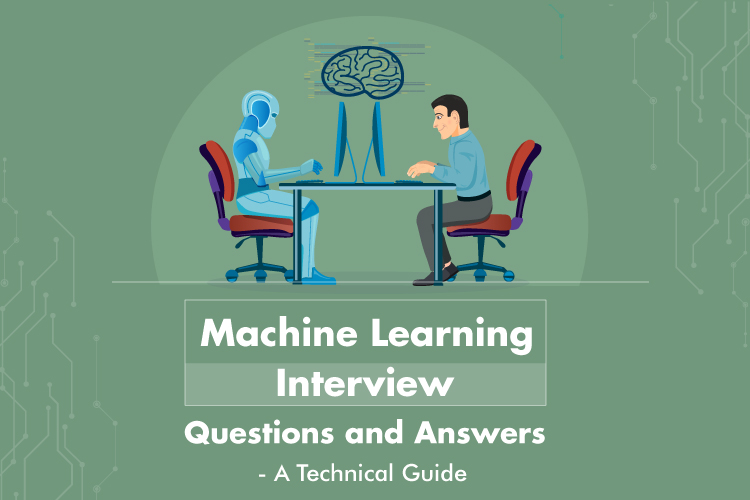- June 11, 2021
- nschool
- 0

Machine Learning Interview Questions and Answers – Technical Guide
MACHINE LEARNING INTERVIEW QUESTIONS AND ANSWERS – A TECHNICAL GUIDE
With the introduction of Artificial Intelligence, Machine Learning, and Deep Learning, the world has changed and will continue to evolve in the years ahead. We’ve compiled the most commonly asked questions by interviewers in this Machine Learning Interview Questions 2021 blog. After consulting with Machine Learning Certification Training Experts, these questions were compiled.
Let’s have a look at the basic and practical kinds of question sections like machine learning interview questions for freshers and machine learning interview questions for experienced
MACHINE LEARNING INTERVIEW QUESTIONS FOR FRESHERS
- Tell me about Machine Learning.
- Decision Trees
- Neural Networks (backpropagation)
- Probabilistic networks
- Support vector machines
- Nearest Neighbor
- Supervised Learning
- Unsupervised Learning
- Semi-supervised Learning
- Reinforcement Learning
- Transduction
- Model building
- Model testing
- Applying the model
- Computer Vision
- Speech Recognition
- Data Mining
- Statistics
- Informal Retrieval
- Bio-Informatics
- Reduce uncertainty by incorporating fewer variables and parameters into the model, eliminating some of the noise from the training results.
- Use techniques like k-folds cross-validation for cross-validation.
- Using regularisation techniques like LASSO to penalize those model parameters that are prone to overfitting.
- Data Acquisition
- Ground Truth Acquisition
- Cross-Validation Technique
- Scoring Metric
- Significance Test
- Query Type
- Classifications
- Regression
- Forecast time series
- Annotate strings
- Speech recognition
- Look for data clusters.
- Discover low-dimensional data representations.
- Look for interesting directions in data.
- Correlations and coordinates of interest
- Find observations/clean up the database
- Platt Calibration
- Isotonic Regression
- Collect more data to even out the dataset’s imbalances.
- To compensate for imbalances, resample the dataset.
- On your dataset, try a different algorithm entirely.
- Sequence prediction
- Sequence generation
- Sequential decision
- Sequence recognition

